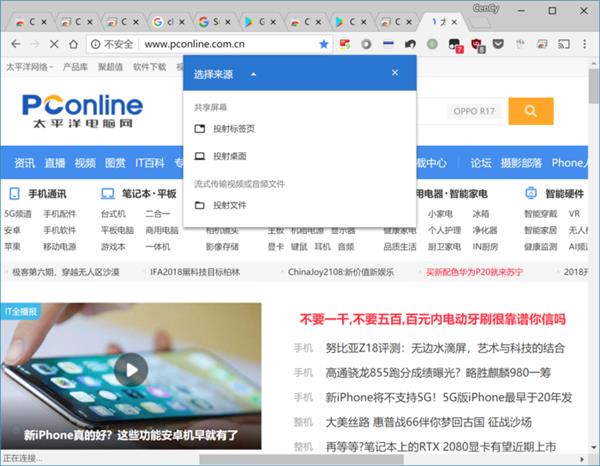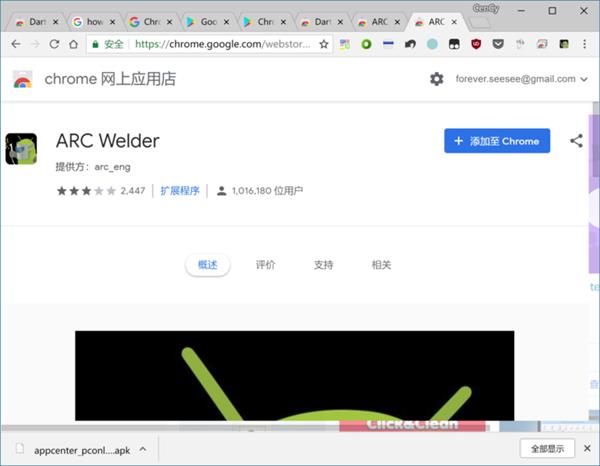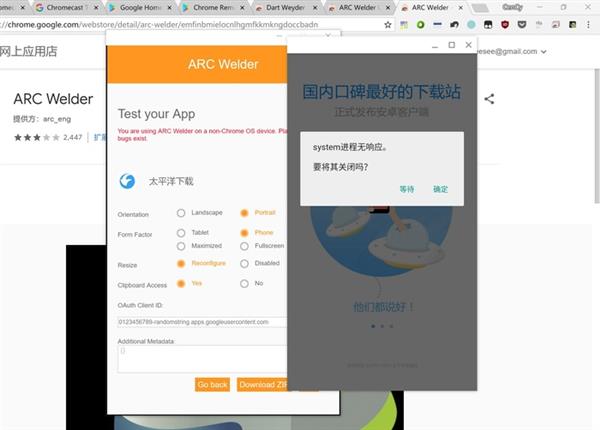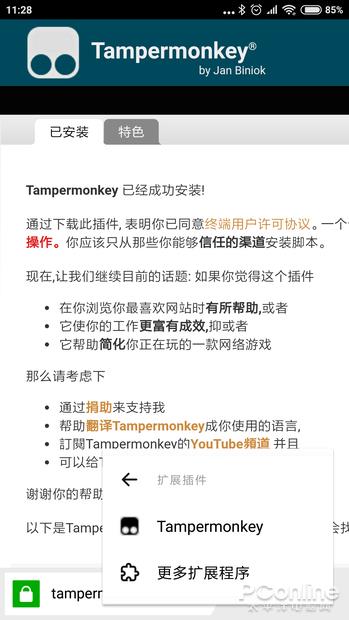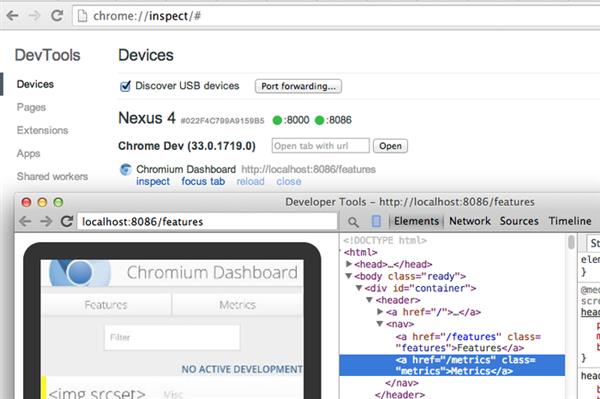At 12 noon local time on February 21st, Russian President Vladimir Putin delivered a State of the Union address at Moscow Commercial Stack Exhibition Center, which was the first time since the outbreak of the conflict between Russia and Ukraine.
Putin said that Russia has taken all possible peaceful means to solve the Ukrainian crisis, but the West is using Ukraine to confront Russia and trying to "strategically defeat Russia". He pointed out that the undisguised goal of the western elite has already involved Russia’s national survival.
Putin criticized the sanctions imposed on Russia by western countries and cited a series of good economic data to prove the ineffectiveness of the anti-Russian sanctions imposed by the United States and the West. In addition, a series of targeted measures were put forward on the status quo of the battlefield, the rights and interests of soldiers, the domestic economy and people’s livelihood, education and culture, and family pensions for soldiers participating in the war.
Observer Network translates the full text of the speech for reference only.
[Translation/Xia Qing, Lan Yang, Quan Shijun, Master Students of Shanghai International Studies University, Observer Network Yang Jiayuan]

On February 21, local time, Russian President Vladimir Putin delivered a State of the Union address. The picture is from the website of the Russian Presidential Palace
Putin:
Dear deputies to the Federal Parliament, senators and deputies to the State Duma,
Dear Russian citizens,
Good afternoon!
Today, at a difficult time for our country, I am here to deliver a State of the Union address. We are all well aware that during this period, irreversible major changes have taken place in the world, and major historical events have taken place that affect the future of our country and our people. During this period, each of us shoulders great responsibilities.
A year ago, in order to protect the people in our historical land, ensure the security of our country and eliminate the threat posed by the neo-Nazi regime in Ukraine after the coup in 2014, we decided to launch a special military operation. We will solve the tasks we face step by step, cautiously and consistently.
Since 2014, the people of Donbass have been fighting for the right to live in their own land and speak their mother tongue. In the face of blockade and constant shelling, and the undisguised hatred of the Kiev regime, they did not give up fighting. They believed and waited for Russian rescue.
At the same time, you know very well that we are trying every means-really all peaceful means-to solve this problem. We are patiently negotiating with each other to find a peaceful way to solve this complex conflict.
But behind us, another completely different drama has been staged. The promise of western rulers, their guarantee of Donbass’ desire for peace, as we can see now, has become a forgery and a cruel lie. They are just stalling for time, playing tricks, turning a blind eye to political murder, the repression of disobedient people by the Kiev regime and the ridicule of believers, and increasingly encouraging Ukrainian neo-Nazis to carry out terrorist acts in Donbass. Western training camps provide military training for nationalist officers and constantly provide them with weapons.
I want to emphasize that even before the start of the special military operation, Kiev negotiated with the West on the delivery of air defense systems, combat aircraft and other heavy equipment to Ukraine. We still remember that the Kiev regime tried in vain to acquire nuclear weapons, which we also talked about openly.
The United States and NATO quickly deployed military bases and secret biological laboratories near our border. During the exercise, they are mastering the battlefield of future military operations and preparing for a big war for the Kiev regime attached to them and Ukraine enslaved by them.
And today they admit it-openly, openly and without scruple. They seem to be very proud and intoxicated with their treachery, saying that the Minsk Agreement and the Normandy model are just diplomatic performances and bluffing. Facts have proved that when Donbass was burned, when people were bleeding, and when Russia sincerely-I want to emphasize this point-sincerely sought a peaceful solution, they have been playing with people’s lives. In fact, as they say in their circles: playing with marked cards. (Russian proverb refers to the act of deceiving partners in cooperation)

On February 20, local time, Biden made a surprise visit to Kiev and announced that he would provide Ukraine with another 500 million US dollars. Picture from Reuters
They have tried this disgusting deception many times before. When they destroyed Yugoslavia, Iraq, Libya and Syria, they showed the same shamelessness and double standards. They will never be able to wash away their shame. Honor, trust and decency-they don’t deserve it.
In the long centuries full of colonialism, arrogance and hegemony, they are used to everything that is allowed and to dismissing the whole world. Facts have proved that they treat the people of their own country with the same disdain and attitude like God-after all, they have cynically deceived or blinded them with empty words of seeking peace and abiding by the UN Security Council resolution on Donbass. In fact, the western elite has become a symbol of unprincipled lies.
We not only firmly defended our interests, but also defended our position that today’s world should not be divided into so-called civilized countries and all other countries, and an honest partnership is needed to reject any exclusive behavior, especially aggression.
We have always been prepared for constructive dialogue with western countries with an open and sincere attitude. We have said and insisted that Europe and the whole world need an indivisible security system in which all countries are equal. Over the years, we have proposed to our partners to discuss this idea together and work hard to realize it. However, the response we received was either ambiguous or insincere. This is only at the linguistic level. They also took concrete actions: NATO expanded to our borders and established new missile defense positioning zones in Europe and Asia-they decided to shield us with an "umbrella", that is, to deploy military contingents, and not only near the Russian border.
I want to emphasize that no country in the world has so many military bases abroad as the United States. There are hundreds in the world, and I want to emphasize this point-hundreds of bases cover the whole earth, and you only need to look at the map to know.
The whole world has seen them withdraw from the basic weapons agreements, including Intermediate-Range Nuclear Forces Treaty, and unilaterally tear up the basic treaties for maintaining world peace. They do this for a reason-as we all know, they don’t do anything for no reason.
Finally, in December 2021, we formally issued a draft treaty on security guarantees to the United States and NATO. But on all the key positions that we think are principled, we were directly rejected. Then I finally understood that they sent a signal to implement aggressive plans, and they didn’t intend to stop.
The threat is increasing day by day, and the information we have received clearly shows that by February 2022, the Kiev regime has prepared everything to take another bloody encirclement and suppression operation in Donbass. I remember that the Kiev regime dropped artillery, tanks and planes on Donbass as early as 2014.
We all clearly remember the photos of Donetsk being attacked by air. Not only Donetsk, but also other cities were attacked by air. In 2015, they once again attempted to directly attack Donbass, while continuing to blockade, shell and intimidate civilians. All this completely violates the relevant documents and resolutions adopted by the UN Security Council, but everyone pretends that nothing happened.
I want to reiterate that they started the war and we used force to stop it.
Those who plan a new round of attacks on Donetsk and Lugansk clearly know that the next goal is to attack Crimea and Sevastopol; We know and understand this. Now such a far-reaching plan is also openly discussed in Kiev, revealing what we already know very well.
We are protecting people’s lives and our own homes. The goal of the west is to have unlimited power. They have spent more than 150 billion dollars to arm the Kiev regime and help them commit crimes. In contrast, according to the data of the Organization for Economic Cooperation and Development, the Group of Seven allocated about $60 billion in 2020-2021 to help the poorest countries in the world. That’s understandable, right? 150 billion is spent on wars, while 60 billion is spent on the poorest countries-these countries always seem to be taken care of, and as we all know, these countries that have received funds are required to obey them. And where are all the discussions about poverty alleviation, sustainable development and environmental protection? Where did all this go? Where have they all gone? At the same time, the capital flow for war has not decreased. They spared no effort to encourage unrest and coups in other countries all over the world.
At the recent Munich Security Summit, people made endless accusations against Russia. The impression is that this is just to make people forget what the so-called western countries have done in the past few decades. They "let the genie out of the bottle" and plunged the whole area into chaos.
According to American experts themselves, the result of many wars-I want to remind you: these figures were not invented by us, but provided by Americans themselves-caused nearly 900,000 deaths and more than 38 million refugees after 2001. They just want to erase all this from human memory and pretend it never happened. But no one in the world has forgotten and will not forget these.
They didn’t consider human casualties and tragedies, because of course, trillions and trillions of dollars were at stake for them; Is to continue to steal everyone’s opportunity; It is to instill the values of neoliberalism and totalitarianism under the guise of democracy and freedom; Is to label the whole country and people and publicly insult their leaders; Is to suppress different political views in their own country; It is to create an enemy’s image to divert people’s attention from the corruption scandal-all these are their blatant acts, which we can all see-from the growing economic problems, social problems and inter-ethnic contradictions in their country.
I want to remind you that in the 1930s, the West actually paved the way for the Nazis to come to power in Germany. In our time, they began to turn Ukraine into "anti-Russia". This project is actually not new. Anyone who knows a little about history knows very well that this project can be traced back to the 19th century, and it has been developed in Austria-Hungary, Poland and other countries with only one purpose-to separate these historical territories, that is, today’s Ukraine, from our country. This is the purpose. Nothing new, nothing new, everything is repeating.
The West accelerated the implementation of this project by supporting the coup in 2014. After all, the coup was bloody, anti-state and anti-constitutional-as if nothing had happened, as if it was necessary, and they even reported how much it had cost. Russian phobia and aggressive nationalism became the basis of their ideology.
Recently, a brigade of the Ukrainian armed forces-we are ashamed, but they are not ashamed-was named Edelweiss. As a fascist division, it participated in the expulsion of Jews, the execution of prisoners of war, and the encirclement and suppression of guerrillas in Yugoslavia, Italy, Czechoslovakia and Greece. The Ukrainian armed forces and the National Guard were especially welcomed by the Das Empire, the Dead Head, Galicia and other SS troops, and their hands were covered with blood. The armored vehicles in Ukraine have the symbols of the Nazi German Defence Forces.
Neo-Nazis don’t hide who they think they are. Surprisingly, no one in power in western countries noticed this. Why? Because they don’t care-please forgive my rudeness, they don’t care who they bet on in the struggle against us and Russia. The most important thing is to oppose us and our country, so everyone can be used. We have seen it, we have seen it happen-whether terrorists, neo-Nazis, or even a bald devil can be used, God bless, as long as they obey orders, as a weapon against Russia.
The "anti-Russia" project is essentially a part of the revenge policy against China, aiming at creating a hotbed of instability and conflict near our borders. No matter in the 1930s or now, their ideas are the same-invading the East, igniting wars in Europe, and destroying their opponents with the help of others.

On February 21st, Biden made a speech in Poland.
We are not at war with the Ukrainian people. I have repeated this many times before. The Ukrainian people themselves have become hostages of the Kiev regime and its western masters. They have actually occupied the country politically, militarily and economically, and have been destroying Ukrainian industry and plundering Ukraine’s natural resources for decades. The logical result is a great increase in social degradation, poverty and inequality. In this context, of course, it is easy to draw material for military operations. No one thinks about the people. They are ready to be slaughtered and finally turn them into consumables for war. Sadly, it’s frightening to say, but it’s true.
The responsibility for inciting the conflict in Ukraine, escalating the conflict and increasing the number of victims lies entirely with the western elite, and of course with the current regime in Kiev. The Ukrainian people know little about the nature of these things. Today’s Ukrainian regime serves not its national interests, but the interests of third countries.
The west regards Ukraine as both a battering ram against Russia and a training ground. I won’t dwell on the attempts of western countries to reverse the hostile situation now, and I won’t talk about their plans to increase military supplies-everyone knows this very well. But there is one thing that everyone should understand: the more remote systems the West arrives in Ukraine, the more we are forced to act and push the threat away from our borders. This is a matter of course.
Western elites have made no secret of their goal: as they say, it can be said directly-"strategically defeating Russia." What does this mean? What does this mean for us? This means destroying us once and for all, that is, they intend to turn a local conflict into a global confrontation. This is how we understand it, and we will respond accordingly, because in this case, it has already involved the survival of our country.
But they can’t help but realize that it is impossible to defeat Russia on the battlefield, so they are more and more active in information attacks on us. Of course, the most important thing is that their target is young people, the younger generation. Here, they keep lying, distorting historical facts and constantly attacking our culture, the Russian Orthodox Church and other traditional religious organizations in our country.
Look at what they have done to their own people: destroying family, culture and national identity, abusing children and even pedophilia are regarded as a norm, a norm of their lives, and priests and priests are forced to bless same-sex marriage. Whatever. Let them do whatever they want. What do I want to say here? Adults have the right to live according to their own wishes, which has always been the case in Russia and will always be the case in the future: no one will interfere in personal privacy, and we will not do so.
But I want to say to them: but please look, sorry, look at the sacred scriptures, the main books of all other world religions; Everything is mentioned in it, including that the family is the union of a man and a woman, but even these sacred texts are now questioned. As we all know, the Anglican Church, for example, is planning to consider the idea of a gender-neutral god. What can you say? God bless, "they don’t know what they are doing."
Millions of people in the west realize that they are being led to a real spiritual disaster. To put it bluntly, the elites are going crazy and seem hopeless. But this is their problem. As I said, we have an obligation to protect our children, and we will do this: we will protect our children from degeneration and degradation.
Obviously, the west will try to destroy and split our society and bet on national traitors. At any time-I want to emphasize this point-these people have the poison to despise their motherland and hope to make money by selling it to those who are willing to pay. It has always been like this.
Those who directly embark on the road of betrayal, commit terrorist acts and other crimes against the security of our society and the territorial integrity of our country will be investigated for legal responsibility. But we will never engage in witch hunting like the Kiev regime and western elites, and we will not settle accounts with those who have stepped aside and abandoned the motherland. Let this betrayal and crime stay on their conscience and let them live with it-they must live with it. The most important thing is that the people and citizens of Russia have given them moral accusations.
I am proud-I think we are all proud-that the people of all ethnic groups and the overwhelming majority of citizens have taken a principled stand on special military operations, understood the significance of our actions and supported our actions to protect Donbass. Most importantly, this support shows true patriotism, which is an emotion inherent in the history of our people. This kind of emotion is people’s dignity, and it is a profound understanding that everyone’s-I emphasize-everyone’s fate is inseparable from the fate of the motherland.
Dear friends, I want to thank everyone, all the Russian people for their courage and determination, our heroes, the soldiers and officials of the army and navy, the Federal Guard, the Secret Service and all the security agencies, the soldiers of Donetsk and Lugansk legions, the volunteers, and the patriots fighting in the reserve team of BARS combat troops.
I also want to apologize: I’m sorry, I can’t name everyone in today’s speech. When I was preparing this speech, I made a long list of these heroic troops, and then I took it out of today’s speech, because as I said, it is impossible to say everyone’s name, but I am worried that those who have not been named will feel wronged.
I am very grateful to the parents, wives and family members of the defenders of our motherland, to the doctors and nurses, to the nurses who treated the wounded, to the railway workers and drivers who supplied the front line, to the construction workers who built fortifications and restored houses, roads and civil facilities, to the workers and engineers of the national defense factory, who are now working around the clock in shifts, and to the farm workers who have reliably guaranteed the national food security.
Thanks to those teachers who really care about the younger generation in Russia, especially those who work in the most difficult-in fact, the front line; Thanks to those cultural figures who came to the war zone and came to the hospital to support soldiers and officers; Thanks to those volunteers who help the frontline and civilians; Thanks to those editors-first of all, the war editors who risked their lives to tell the truth to the world at the front; Thanks to the priests and military priests of Russian traditional religions, their wise words support and inspire people.
In particular, I would like to say a word to the residents of Donetsk and Lugansk, Zaporoze and Hellson. Dear friends, you decided your own future in the referendum. Despite the threats and intimidation from neo-Nazis and the military action close to you, you made a firm choice, and nothing can stop your determination to be with Russia and the motherland.

Luganskli Xichang Sk, a building destroyed by a military attack. Picture from Reuters
(Applause)
I want to emphasize that the applause in the hall just now was given to the residents of Donetsk, Lugansk, Zaporoge and Hellson. Once again: bow to all of them.
We have started large-scale reconstruction and socio-economic development in the above four areas. In particular, we are talking about rebuilding enterprises, increasing jobs, rebuilding the port of the Azov Sea-the Azov Sea has once again become the internal sea of Russia, and building a new road of modernization-as we did in Crimea, and now Crimea has a solid land transportation with the whole of Russia. We will definitely implement all these plans through our joint efforts.
Today, all regions of the country are providing direct support to cities and towns in Donetsk, Lugansk, Zaporoze and Hellson, and sincerely supporting them like real brothers and sisters. Now that we are together again, we will become stronger, and we will make every effort to bring the long-awaited peace back to our land and ensure the safety of our people. Therefore, for their ancestors, for the future of their children and grandchildren, for the restoration of historical justice, and for the reunification of our country, our heroes are fighting today.
Dear friends, I ask you to observe a moment of silence for the comrades who gave their lives for Russia, the civilians, the elderly, women and children who died under the guns of neo-Nazis and enemies.
(Minute of silence)
Thank you.
We all know, and I also know, how painful and unbearable it is to sacrifice soldiers’ wives, children and their parents. They have raised respectable defenders of the motherland-just like the youth guard in Crash Norton, just like the young men and women who fought against Nazism and defended Donbass during the Great Patriotic War. Their courage, determination, great perseverance and spirit of sacrifice are still remembered by all Russians today.
We have the responsibility to support families who have lost their loved ones, help them raise their children, educate them and arrange jobs for them. The family of each participant in the special military operation must receive continuous attention and be surrounded by care and honor. Their needs should be solved immediately without delay.
I propose to set up a national special fund to provide assistance to the families of fallen soldiers and veterans of special military operations. Specifically, it includes providing them with social, medical and psychological support, solving the problems of recuperation and rehabilitation, and providing assistance in education, sports, employment, entrepreneurship and further study. Another very important task of the fund is to provide long-term home care and high-tech prostheses for those in need.
I call on the government, together with the Social Policy Committee under the National Federal Council and other regions, to complete all the preparatory work as soon as possible.
The work of the national special fund should be open, the aid procedures should be simple, the principle of "one window" should be adhered to, and formalism and bureaucracy should be eliminated. I want to emphasize that a social worker should be assigned to the family of every soldier killed in battle and every veteran to carry out coordination work and solve new problems in communication in real time. This year, the fund should be able to cover all regions of the Russian Federation.
At present, we have taken measures to protect the rights and interests of veterans of the Great Patriotic War, other wars and regional conflicts. I think that in the future, the national special fund I mentioned can also solve this important problem. We need to work hard in this regard, and I call on the government to do so.
I must emphasize that setting up a special fund does not mean exempting other departments and governments at all levels from their responsibilities. I hope that all federal departments, all regions of the country and governments at all levels will continue to pay close attention to veterans, active servicemen and their families. I would also like to take this opportunity to thank the leaders, mayors and regional leaders of the federal entities who went to the front line to express their condolences to the soldiers and support their compatriots.
Nowadays, active soldiers, mobilized soldiers and volunteer soldiers endure the hardships of the front line together. I am referring to the problems of materials and equipment, allowances and disability insurance, and medical assistance. However, from the appeals received by me and the governors, the military procuratorate and the Commissioner for Human Rights, it can be seen that these problems are far from being solved. We must set about solving every specific problem.
One more thing: everyone knows very well that soldiers serving in special military operations areas are under great physical and mental pressure and face life threats every day. Therefore, I think it is necessary to arrange regular holidays of not less than 14 days for all participants in special military operations, including mobilized soldiers and volunteer soldiers-not including travel time, and at least once every six months, so that every soldier has the opportunity to go home to visit relatives and reunite with his family.
Dear colleagues!
As we all know, the presidential decree approved the plan for the construction and development of the armed forces for 2021-2025. This plan is being implemented, and there will be some necessary adjustments. What I want to emphasize is that in the future, we must further strengthen the construction of the army and navy and develop the armed forces based on the actual combat experience gained in special military operations. These experiences are very important to us, even priceless.
For example, the equipment level of Russia’s latest nuclear deterrent force now exceeds 91%, or more precisely 91.3%. In view of our experience, we must make all components of the armed forces reach the same high quality level.
We will give priority to promoting those officers and non-commissioned officers who understand the military, are modern, decisive and have command ability, and send them to military academies to study, which will become our powerful military power reserve. We don’t lack these talents. I also want you to understand that the state attaches importance to their contribution to defending the motherland.
We will actively introduce the most advanced technology to improve the combat capability of the army and navy. We have research in various fields and are constantly developing weapons and equipment. These weapons are obviously superior to similar foreign products in characteristics. Now our task is mass production. At present, this work is being carried out and its speed is accelerating. I want to emphasize that our production is based on Russia’s own science and industry, thanks to the participation of small and medium-sized high-tech enterprises.
Today, our factory, design bureau and research team have hired experienced experts and more and more young people. They are talented, qualified, brave in breaking through and loyal to the tradition of Russian ordnance workers-doing their best to win.
We will certainly strengthen the protection of the labor force, including solving the problems of wages and social insurance. I suggest that a special preferential plan for renting houses for employees of military enterprises be carried out, so that their rents are much lower than the market price, and the state will bear most of the rents for them.
Of course, we have discussed this issue with the government. I will ask them to work out all the details of the plan as soon as possible and start building such rental houses immediately. Of course, mainly in the cities where our important national defense, industry and research centers are located.
Dear colleagues!
As I said, in order to deal with us, the west not only launched an information war, but also deployed an economic war against Russia. But they have not achieved anything, and they will never achieve anything. In addition, the initiators of anti-Russian sanctions have also been punished: their actions have caused problems such as rising prices, unemployment, factory closures and energy crisis in their own countries. However, they said to their citizens, "It’s all the fault of the Russians.".
What means did they use against us in this sanctions? They tried to cut off the economic ties with Russian companies and cut off the communication channels of the financial system, thus destroying our economy; Do not let us enter the export market, thus reducing income; Stealing our foreign exchange reserves, trying to make the ruble collapse and causing destructive inflation.
I want to reiterate that anti-Russian sanctions are only a means to an end. And its purpose-to quote some western leaders directly-is to make our citizens "suffer". Is this what the so-called humanists say? They want to make our citizens suffer, thus undermining our social stability from the inside.
But their abacus is not well played, and Russia’s economy and governance system are much stronger than the west thought. Thanks to the joint efforts of the government, Parliament, Bank of Russia, federal regions, and of course, business circles and working people, we have ensured the stability of the economic situation, protected our citizens, stabilized employment, avoided the shortage of daily necessities, stabilized the financial system, and supported entrepreneurs who are committed to promoting enterprise development and national development.
As early as last March, the state launched a package of 1 trillion rubles to support enterprise and economic development. I want to remind you that this is not a fiscal policy of issuing bonds, and everything is carried out on a solid market basis.
At the end of 2022, China’s GDP declined. Mr. Mikhail vladimirovich called me, and he wanted me to talk about it. I think this information was released yesterday. This information is correct and timely. As expected, everything is going according to plan.
You know, we have been predicted that the economy will decline by 20-25%. Not long ago, I predicted that this figure was 2.9%, and then I said it was 2.5%. At present, the latest data shows that the GDP will drop by 2.1% in 2022. Meanwhile, as I said, as early as February and March last year, they predicted that our economy would collapse.
Russian enterprises have rebuilt the logistics system and strengthened their ties with responsible partners. There are many such partners all over the world.
Compared with December 2021, the share of ruble in Russian international settlement has doubled, accounting for one third; If you add the currencies of friendly countries, the share will exceed half.
We will work with our partners to establish a stable and safe international settlement system. We will not rely on the dollar and other western reserve currencies. These currencies will inevitably lose their universality under the policies of western elites and rulers. All this is caused by their own hands.
There is a common saying that "artillery replaces butter", which will not happen in Russia. Of course, national defense is the most important thing. However, when dealing with strategic issues in this field, we must never repeat the same mistakes and never destroy the national economy. We have the ability to ensure national security and create conditions for the stable development of the country. It is based on this logic that we have taken action and will continue to do so.
Last year, the output of many basic departments, especially those related to people’s livelihood, increased significantly instead of decreasing. For example, the area of houses put into production exceeded 100 million square meters for the first time in history.
In terms of agricultural production, we achieved double-digit growth last year. Thank you agricultural producers and salute you! The harvest of Russian farmers has set a record: more than 150 million tons of grain have been harvested, including more than 100 million tons of wheat. By the end of the busy farming season, that is, by June 30, 2023, the total grain export will reach 5.56 billion tons.
10-15 years ago, it seemed to be just a fairy tale, an idea that could never be realized. I think there must be some people here who remember-yes, our former deputy prime minister and minister of agriculture is here-that not long ago, our annual grain output was only 60 million tons. Now, the total grain we export alone will reach 55-60 million tons. I believe that we can make similar breakthroughs in other fields.
We didn’t shrink the labor market. On the contrary, we have reduced the unemployment rate under the existing conditions. Nowadays, facing various difficulties, our labor market is more stable than in the past. You know, before the COVID-19 epidemic, our unemployment rate was 4.7%, but now it is 3.7%. Mr Mikhail vladimirovich, what is the concept of 3.7%? This is a record low.
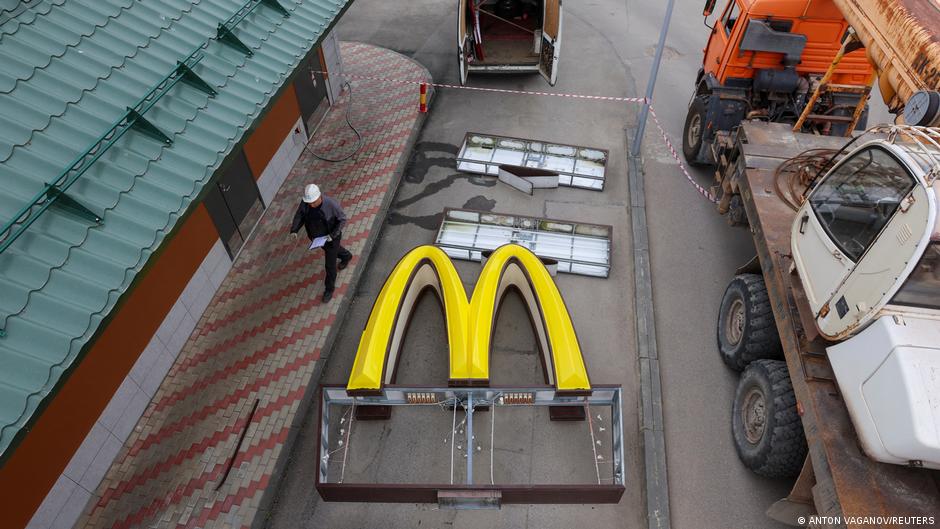
Multinational companies such as McDonald’s have withdrawn from the Russian market. Figure from Reuters
I reiterate that the Russian economy has overcome all kinds of risks that have arisen. Yes, many of these risks are unpredictable. When problems arise, we have to improvise. At the level of government and enterprises, we make decisions as quickly as possible. I want to point out that individuals and small and medium-sized enterprises have played a huge role in this process, and they should not be forgotten. We have avoided excessive administrative supervision and the economic tilt towards the country.
In addition, last year, there was only a recession in the second quarter, and in the third and fourth quarters, the economy achieved growth. In fact, we have entered a new economic growth cycle. Experts pointed out that the pattern and structure of this cycle are qualitatively different from those in the past. New global markets are gradually emerging, including the Asia-Pacific market and the Russian domestic market. The allocation of science and technology and human resources is also changing. We not only supply raw materials, but also produce high value-added goods. This has released Russia’s great potential in various fields.
This year, domestic demand is expected to grow steadily. I believe that Russian companies will take this opportunity to increase production and produce popular products to fill the vacancy in the market after the withdrawal of western companies.
Now, looking at the overall situation, we clearly see the structural problems that need to be solved in logistics, technology, finance and talents. In recent years, we have been talking about the need to change our economic structure. It is very important to make these changes now, which can help us improve the current situation. We know what needs to be done to ensure the steady development of Russia, especially in the face of external pressures and threats, and we know how to safeguard sovereignty and independent development and ensure national security and interests.
Please note that the focus of our work is not to adapt to the current situation, but to let the economy enter a new stage of development. Everything is changing now, and it is changing very, very fast. This is an era full of challenges and opportunities. Our future depends on what we do. I want to emphasize that we must eliminate contradictions and misunderstandings among all departments and all kinds of formalism. We should be guided by the matter itself and the result.
The successful start of Russian companies and small family businesses is a victory, the opening of modern factories and the construction of new roads are a victory, and the construction of new schools or kindergartens is also a victory. Behind these victories, everyone has contributed.
Where should the cooperation between countries, regions and domestic enterprises be concentrated?
First, we will expand foreign economic relations and build a new logistics corridor. We have decided to extend the Moscow-Kazan Expressway to Yekaterinburg, Chelyabinsk and Tyumen, and to Irkutsk and Vladivostok in the future, connecting Kazakhstan, Mongolia and China. This will greatly expand Russia’s links with Southeast Asian markets.
We will also develop ports in the Black Sea and the Sea of Azov, and pay close attention to the North-South International Corridor. This year, ships with a draft of more than 4.5 meters have been able to pass through the Volga River-Caspian Canal. This will provide new possibilities for cooperation with India, Iran, Pakistan and Middle East countries. We will continue to develop this corridor.
According to the plan, we will accelerate the modernization of the Eastern Railway, trans-siberian railway and Baikal-Amur Railway trunk lines, and improve the capacity of the North Sea route. This can not only increase the freight volume, but also realize the development of Siberia, the Arctic and the Far East.
Promote the construction of infrastructure such as communications, telecommunications and highways in various regions. By 2024, it is estimated that no less than 85% of roads in major urban agglomerations in China and more than half of roads in other regions will reach the standard state. I believe that we can do it.
We will continue to provide free natural gas. Now it is planned to supply natural gas to more public places, such as kindergartens, schools, clinics, hospitals, rescue stations and so on. Citizens can also access the natural gas supply network at any time.
A large-scale plan for the construction and maintenance of public housing will also be launched this year. In the next decade, we expect to invest at least 4.5 trillion rubles in this field. We know how important housing is to citizens, but it is far from enough at present. To this end, we need to make continuous efforts to do this work well. This plan needs to be implemented immediately, so I ask the government to ensure stable funding for it.
Second, we must greatly improve Russia’s technological level and ensure the growth of domestic industry.
We have launched an industrial mortgage loan scheme. From now on, loans can be used not only for purchasing production sites, but also for their construction or modernization. We have been discussing the loan amount and always want to increase it. At present, the amount of this loan is as high as 500 million rubles, the interest rate is 3% or 5%, and the loan period can last for up to seven years. I think this is a very good plan and should be used reasonably.
Starting from this year, the new operation mode of industrial clusters has also come into effect, and the financial and administrative burden of settled enterprises has been reduced. The state also supports innovative products newly put into the market by signing long-term orders and subsidies.
According to statistics, by 2030, these measures will ensure that projects exceeding 10 trillion rubles will land. It is estimated that the investment this year will reach about 2 trillion yuan. This is not only a prediction, but also a clear goal.
Therefore, the government is requested to start these projects as soon as possible to provide support for enterprises and implement a series of support measures including tax incentives. I know that the financial sector doesn’t like to offer preferential treatment, and I can understand that the tax system should be comprehensive without any exceptions, but in this case, a creative method is needed.
For example, starting this year, Russian enterprises can get tax relief if they buy domestic IT solutions or artificial intelligence products. In addition, the company can reduce the tax by one and a half rubles for every ruble spent when purchasing such products.
I suggest extending this tax cut to the purchase of Russian high-tech equipment. The government is requested to list the use areas of such equipment and formulate corresponding tax relief rules. This is a good way to revive the economy.
One of the most important problems in economic growth is how to attract new investment. This is a commonplace question.
Because of the good balance of payments, Russia does not need to borrow money from abroad, bow its head and beg, nor does it need to have a long dialogue on what to repay, how much to repay and what conditions to attach. Banks in Russia are stable, sustainable and very safe.
In 2022, the total amount of bank loans to enterprises increased, yes. Many people doubt this, but this conclusion is well documented, and the specific growth data is 14%. This is more than in 2021, when there was no military action. In 2021, this figure was 11.7%, but now it is 14%. The mortgage portfolio also increased by 20.4%.
Last year, the banking industry as a whole achieved profitability. Indeed, the profit is not as high as in previous years, but it is also good, totaling 203 billion rubles. This also reflects the stability of Russian financial industry.
According to statistics, Russia’s inflation rate will approach the target level of 4% as early as the second quarter of this year. We should know that the inflation rate in some EU countries has reached 12%, 17% or even 20%, while that in China is only 4%-5%. The central bank and the Ministry of Finance are still counting specific data, which is expected to be close to the target level. In view of the positive trend of this indicator and other macroeconomic indicators, the objective conditions for reducing the medium and long-term loan interest rate in the economy are taking shape, which means that the real sector will get loans more easily.
Citizens’ long-term savings have always been an important source of investment for all countries in the world, and we also need to encourage citizens to invest their long-term savings. The government is requested to submit the draft law to the State Duma as soon as possible and start the corresponding national plan in April this year.
It is necessary to create more conditions for citizens to invest and make money in China. At the same time, it is necessary to ensure the investment safety of citizens in voluntary pension savings. There should be the same mechanism as the bank deposit insurance system. This savings of up to 1.4 million rubles is guaranteed by the state, which guarantees a return. I propose to double the amount of voluntary pension savings to 2.8 million rubles. We also need to protect citizens’ interests in other long-term investments, including preventing financial intermediaries from going bankrupt.
In order to attract capital to invest in high-speed development enterprises and high-tech enterprises, we need to make special plans. For example, we will support these enterprises to issue shares in the domestic stock market and provide tax incentives for these enterprises and stock buyers.
The basic element of economic sovereignty is the freedom of enterprise operation. I want to reiterate that it is the private enterprises that can adapt to the rapidly changing environment and achieve economic growth under challenging circumstances when external forces try to contain Russia. Therefore, every business initiative aimed at benefiting the country should be supported.
From this point of view, I think it is necessary to re-examine some provisions of the criminal law on so-called economic crimes. Of course, the state must control the development of the economic sector, and we don’t allow it to drift, but there is no need to interfere too much. It is necessary to develop more actively in the direction of decriminalization I mentioned. I believe that the government will work with the parliament, law enforcement agencies and business associations to carry out this work continuously and thoroughly.
At the same time, the government is invited to communicate closely with the parliament and put forward more measures to speed up the process of economic offshore. It is a basic principle that enterprises, especially those in key sectors and industries, must operate within the jurisdiction of the Russian Federation.
Dear colleagues, let me interrupt a little digression. We always remember the economic problems faced by the Soviet Union in the later period. Therefore, after the disintegration of the Soviet Union, the planned economy system also disintegrated. In the chaos of the 1990s, the state began to establish an economy based on market relations and individual ownership. On the whole, everything is correct. In many ways, western countries have set an example, and economic advisers are everywhere. It seems that it is enough to copy their models. I remember, they also argued with each other: Europeans and Americans argued about how to develop the Russian economy.
And the result? Our national economy relies heavily on the west as its raw material producing area. Of course, this is not entirely appropriate, but in general, it is to export raw materials. The reason for this is understandable: like enterprises in all other countries, the purpose of emerging Russian enterprises is to make profits. By selling oil, natural gas, metals, timber and other resources, we can easily and conveniently make profits.
Few people consider making long-term investments, or there may be no such opportunities. As a result, other more complex economic sectors are not developing well. We can see that in order to break this situation, governments at all levels have spent several years adjusting the tax system and making large-scale public investment.
Our changes are tangible. Yes, we have achieved something. However, what is the situation of our big enterprises now? Technology is monopolized by the west, and financial resources and favorable markets are also in the west; Naturally, capital also began to flow to the west. Unfortunately, the big Russian entrepreneurs did not use the money they earned to expand production, buy equipment and technology and create new employment opportunities, but spent it on buying foreign manors, yachts and luxury real estate.
Yes, and then they also started to invest. However, most of the money is used for consumption. Where there is wealth, there are naturally children, their education, their life and their future. It is almost difficult for the country to monitor or prevent this from happening because we live in a free market.

Beixi natural gas pipeline was bombed
Recent events have proved that the image of the West as a safe haven for capital is a false fantasy. Those who didn’t realize this in time, made money in Russia and planned to live abroad lost a lot: they were robbed and even the legally earned money was taken away.
To tell a joke, many people may still remember that I once said to Russian businessmen: In the future, you may be ashamed to run between the court and the offices of western officials, just to get your money back. Now that’s the truth.
I want to add a very simple but very important truth: believe me, our ordinary citizens will not sympathize with those who lost their funds in foreign banks, nor will they sympathize with those who lost their yachts and foreign palaces. When chatting in the kitchen at home, people may also mention privatization in the 1990s, when the whole country’s enterprises were sold for nothing and fell into the hands of the so-called "new privileged class".
In the years after the collapse of the Soviet Union, the West did not stop trying to "set fire" to the post-Soviet countries, so as to finally eliminate Russia, the largest main country after the collapse of the Soviet Union. They incite international terrorists to target us, provoke regional conflicts on our borders, ignore our interests, and use economic deterrence and repression.
In this case, Russian large enterprises monopolize strategic industries and have thousands of laborers, which determine the social and economic development of many regions. This means that if the leaders or owners of these enterprises are attached to a government that is unfriendly to Russia, it is a great threat to our country. This situation is intolerable.
Yes, everyone has a choice: some people want to drag out an ignoble existence in an imprisoned mansion even if their accounts are frozen, or go to a western capital or a foreign resort for the rest of their lives. This is everyone’s right, and we will not interfere. But please understand that for the west, these people are only second-rate strangers in the past, present and future; It is useless to buy the title of count, noble or mayor by money and connections. They must understand that they are second-class citizens there.
But there is another choice: stay with your motherland, work for your compatriots, start new businesses, and help improve the situation of cities, villages and even countries around you. We have many such entrepreneurs, real business fighters. It is they who promote the development of domestic business. Everyone should understand that happiness and a bright future come from here, from our motherland and from Russia.
Then we will really create a strong and self-sufficient economy, not isolated from the world, but using all its competitive advantages. The money earned in Russia should serve the country and its development. Today, we have broad development prospects in infrastructure, manufacturing, domestic tourism and many other industries.
Those who have experienced the western wolf culture, please listen to me: it is meaningless and useless to try to grovel and beg, especially now that you know who you are dealing with. Don’t cling to the past, but rebuild your life and work, because you are very strong. I said this to the entrepreneurs present, many of whom I know, and I know the hardships of your journey.
Please start new projects, make efforts to make money, invest in Russia, help solve the employment problem, and invest in middle schools, universities, scientific research, health care, culture and sports. Your investment will be rewarded, and you will win people’s recognition and gratitude. The country and the whole society will support you.
This is a good wish for the development of our cause, hoping to develop in this direction.
Dear colleagues!
Russia is an open country, but also a country with a unique civilization. In this report, there is no mention of any claims of exclusivity and superiority. But we must protect our own civilization, which is left by our ancestors, and we must preserve and pass it on for future generations.
We will develop partnership with all friends who are willing to cooperate with us. We will rely on our own potential, the creativity of Russian society and our traditions and values.
Here, I want to talk about the national character of Russians: Russians are always generous, generous, kind and compassionate, and Russia, as a country, fully embodies these qualities. We know how to make friends, always keep our promises, never let anyone down, and will not hesitate to support our friends at any difficult time.
Everyone still remembers that at the beginning of the outbreak of the COVID-19 epidemic, that is, at the most difficult time of the epidemic, we provided support to some European countries including Italian and other countries at the first time. We also provided help when earthquakes occurred in Syria and Turkey.
Russian people are the foundation of national sovereignty and the source of power. The rights and freedoms of our citizens are inviolable and guaranteed by the Constitution. Despite external challenges and threats, we will not shrink back.
In this regard, I also want to emphasize that both the local elections in September this year and the presidential elections in 2024 will be held in strict accordance with the law and in line with all democratic and constitutional procedures.
Elections mean solving social and economic problems in different ways, while the main political forces are consolidated and United. For all of us, the most important and fundamental thing is the safety and well-being, sovereignty and national interests of the people.
Thank you for taking such a responsible and firm stand! I recall what the patriotic politician Peter Arkadevich Stolypin said in the State Duma more than 100 years ago, which is still not out of date. He said: "On the issue of defending Russia, all of us must unite and coordinate the strength, responsibilities and rights of all parties to safeguard a historic supreme right-Russia’s powerful right."
At present, there are members of the State Duma and regional councils in the front-line volunteer army, as well as representatives of administrative organs at all levels, cities, towns, districts and rural areas. All parliamentary parties and public associations participated in the collection of humanitarian supplies and supported the front line.
Thank you again! Thank you for loving your motherland so much!
Local self-government plays a great role in maintaining social relations and solving daily problems. Their work determines citizens’ trust in the country, their confidence in the country’s development and their social well-being.
Please ask the President’s Office to work with the government to submit a proposal on supporting the creation of the best management team in large, medium and small cities.
The free development of society means that we are ready to take responsibility for ourselves, our relatives and our country. These qualities are cultivated in the family from childhood. Of course, education and national culture are also extremely important for consolidating our common values and national identity.
The government will support various forms of creative research, including modern and traditional art, realism and avant-garde, classic and innovative culture, with the help of the Presidential Fund, the Cultural Initiative Fund, the Internet Development Institute and other resources. This has nothing to do with genre and direction. The mission of culture is to serve all good, beautiful and harmonious things and reflect on very complicated and controversial life issues. The most important thing is not to destroy society, but to awaken the best qualities of mankind.
The development of the cultural field will become one of the priorities for the restoration of peaceful life in Donbass and "New Russia". Hundreds of cultural institutions will be restored and rebuilt here, including museum collections and buildings. Let people have the opportunity to feel the connection between the past and the present, and feel a sense of belonging to the great Russia with hundreds of years of history.
With the participation of teachers, scientists and experts, we must seriously improve the quality of middle school and university courses, mainly humanities, including history, social sciences, literature and geography, so that young people can learn as much as possible about Russia and its great past, culture and traditions.
Our younger generation is very smart and talented. They serve the interests of the country in the fields of science, culture, social affairs, commerce and public management. The "Russian Leaders" competition and the "Reviving Leaders" competition currently held in the new federal entities have opened up a career development path for these talents.
Some winners and finalists in these competitions used to be volunteers in the war, and many of them are now working in the liberated areas to help rebuild the local economic and social life. They have rich professional knowledge and are decisive in their actions.
Generally speaking, military action schools are irreplaceable. The people who come out there are different, and they are ready to give their lives for their motherland at any time.
I want to emphasize that those who were born and raised in Donbass and "New Russia" are important pillars for the development of this region. I want to say to them: the hope of Russia lies in you.
In view of the arduous challenges facing our country, we must update our own talent training system and science and technology policy.
At the recent meeting of the Committee on Science Education, we talked about the necessity of setting priorities and concentrating resources to achieve concrete and groundbreaking scientific research results, especially in areas that have a good foundation in our country and are crucial to national development, such as transportation and energy, as well as housing and public utilities, medicine, agriculture and industry.
Almost all new technologies are based on basic research. I want to emphasize that in the fields of basic research and culture in the past, we must let scientists and researchers enjoy greater creative freedom. We must never cut our feet to fit our shoes and force results. Basic scientific research has its own operating rules.
I would like to add that shouldering an important mission is the strongest motivation for young people to enter the field of scientific research, because it is an opportunity to prove that they are leaders. Moreover, our scientific research team has much to be proud of.
Last December, I met with young researchers. One of the problems they raised was housing. Although this is a cliche, it is very important. Our country has been issuing relevant certificates for young researchers to provide housing. Last year, an additional 1 billion rubles was allocated for this measure. I entrust the government to determine the reserve funds for expanding the project.
In recent years, the prestige and authority of secondary vocational education have been greatly improved, and there is a huge demand for graduates from secondary vocational and technical schools and junior colleges. As we all know, the unemployment rate in our country has dropped to the lowest level in history, only 3.7%. This means that all walks of life need more professionals.
In my opinion, it is necessary to expand the "professional and technical personnel" project, build an educational industrial cluster and update the educational foundation within the framework of this project; At the same time, according to the economic needs, enterprises and employers establish close ties with junior colleges and technical schools and draw up educational programs. Of course, it is important that tutors with complex production practice experience can also enter this field.
This task requires specific plans: in the next five years, about 1 million professionals will be trained for the electronics industry, robot industry, machine building industry, metallurgy, pharmaceutical industry, agriculture and agro-industrial complex, construction industry, transportation, nuclear industry, and key industries to ensure Russia’s security, sovereignty and competitiveness.
Finally, there is a very important issue, that is, the higher education system in our country. In view of the new requirements for experts from the economic and social sectors and all fields of our lives, it is inevitable to carry out major reforms in the education system, and it is necessary to combine the essence of the Soviet education system and the excellent educational experience of the past few decades.
In this regard, I would like to make the following suggestions.
First, restore the traditional basic training of experts with higher education in our country, and the study time can be set at 4 to 6 years. Even in the same major and the same university, training courses of different lengths can be provided, depending on the needs of specific majors, departments and labor markets.
Second, if some majors need extra training, that is, to train more specialized people, young people can continue their studies in graduate schools or medical schools.
Third, take postgraduate education as an independent stage of vocational education and training, and cultivate talents for scientific undertakings and teaching activities.
I want to emphasize that we should make a smooth transition to the new education system. The government, together with members of parliament, has substantially revised the education law, the labor market law and other legislation. In this process, everything needs to be considered in detail. Provide opportunities for young people and citizens in our country to receive high-quality education, employment and promotion. I repeat, we should create opportunities for young people, not problems.
It is especially pointed out that students who are now receiving education can continue their studies according to the existing courses. For those who have already graduated, their vocational skill levels and higher education diplomas should not be revised. These people should not lose their power. I instructed the All-Russian People’s Front to pay special attention to all issues related to the reform of higher education.
I have declared this year as the year of education in Russia. Teachers are directly involved in the future construction of the country. What is important is that we must enhance the social significance of teachers’ work, let parents teach their children to be grateful to teachers, and teachers should teach their children to respect and love their parents. Let’s always remember this.
Special emphasis is placed on supporting children and Russian families.
I want to point out that in recent years, the so-called children’s budget or budget expenditure for supporting families has not increased by a few percentage points, but has increased several times. This is the fastest growing part of the country’s main financial documents, namely the annual budget and the Budget Law. I want to thank parliamentarians and the government for having such a high and unified understanding of national priorities.
From February 1st, as we said, according to the actual inflation of last year, the Russian Mothers’ Fund has been indexed again, specifically, increased by 11.9%. Now, citizens of "New Russia Region" can also enjoy this preferential measure. I suggest that mothers’ fund subsidies should be provided to families with children in Donetsk, Lugansk, Zaporoge and Hellson since 2007, that is, since the project was implemented throughout Russia. I remember, we did the same for the residents of Crimea and Sevastopol.
We will continue to implement large-scale projects aimed at improving the well-being of Russian families.
It is emphasized here that the government and the federal entities shoulder a practical task, that is, to ensure that the real wages in Russia are effectively and significantly increased.
We all know that the minimum wage is an important indicator. Last year, the minimum wage increased twice, totaling nearly 20%.
We will continue to raise the minimum wage, and make it grow faster than inflation and wage growth. Since the beginning of this year, the minimum wage has increased by 6.3%.
I propose to increase the growth target by 10% from January 1 next year. As a result, the minimum wage will increase by 18.5% to 19,242 rubles.
Now, for the benefit of Russian families, we are adjusting the tax system: from last year, if families with two or more children want to buy a more spacious new apartment or house, they can be exempted from paying the housing sales tax.
We need to make more active use of these tools to increase the funds in the family budget to solve the most important and urgent problems in the family.
I suggest raising the threshold for paying social taxes. For example, the cost of children’s education-from the current 50,000 rubles a year to 110,000 rubles a year, including the cost of self-study, as well as the cost of medical care and drug purchase-has increased from 120,000 rubles to 150,000 rubles. The state will refund 13% of these increments from the income tax paid by citizens.
Of course, it is necessary not only to increase the tax deduction, but also to increase the demand for the amount of deduction, so that tax deduction can be carried out actively, quickly and remotely without bringing burden to citizens.

Photo from AFP
In addition, the state of social operation directly determines the well-being, quality of life and population status of Russian families.
I know that many departments and organizations in our country are preparing to speed up the transformation of social infrastructure, cultural and sports facilities, and they are planning the resettlement of emergency housing and the all-round development of rural areas. This attitude is worthy of recognition.
We have adopted a mechanism: all regions can now apply directly to the national treasury for interest-free loans, and we have reserved a national project fund for 2024 in the federal budget, which will be repaid automatically in April next year-this is a very good mechanism.
We will keep this mechanism under constant review and invite the Economic and Financial Commission of the Russian Federation to participate in this work.
It is worth noting that we should not rush for success or blindly pursue quantity, let alone cut corners. This extra financial fund should be used efficiently.
The modernization of basic medical care is also particularly important-this is a large-scale plan that we started in 2021. I ask the government and regional leaders to remember to meet the standards. As I have said many times, what we want is not the figures in the report, but to see concrete and practical changes in the quality of medical services.
I also instructed the government to adjust the regulatory framework and purchase ambulances with complete diagnostic devices-so that physical examinations can be conducted directly in enterprises, schools, institutions or remote communities.
We have also launched a large-scale school renovation plan. By the end of this year, the buildings of nearly 3,500 schools will be rectified and renovated, most of which are in rural areas. What’s more, we have also carried out this work in Donetsk, Lugansk, Hellson and Zaporoge. This work is very meaningful and can bring substantial changes to people, which is a good thing.
From 2025, the federal funds for renovating kindergartens, schools, technical colleges and universities will be distributed to all regions regularly and in a planned way to avoid the omission of some buildings that should be repaired.
Moreover, we have set a meaningful goal-between 2019 and 2024, we will build more than 1,300 new schools. Up to now, 850 have been put into use, and another 400 are planned to be put into use this year. I demand that all regions must seriously implement this plan. From 2019 to 2024, the plan spent nearly 490 billion rubles of federal funds, but we will never reduce this expenditure.
This year, we have increased the amount of infrastructure budget loans, and will allocate an additional 250 billion rubles-I need to emphasize: on the basis of the original plan, we will allocate an additional 250 billion rubles for the development of regional transportation, public utilities and other infrastructure.
I also instructed the government to allocate 50 billion rubles to update public transportation and upgrade transportation technology in all federal entities, and pay special attention to small towns and rural areas.
In order to continuously improve the environmental conditions of major industrial centers, we decided to extend the clean air project to 2030. I want to draw the attention of industrial companies and local authorities that the task of reducing harmful gas emissions is still on our agenda.
It is worth mentioning that we have made good progress in reforming the cleaning and recycling of garbage. We continue to develop the ability of garbage sorting and recycling, and strive to move towards a closed-loop circular economy. The old landfill will be eliminated. I also ask the government to work with all regions to prepare a list of existing hazardous wastes, which will be disposed of after the current plan is completed.
We will also continue to repair water bodies-including Lake Baikal and the Volga River. After that, we will extend this work to other rivers in our country, such as Don River, Kama River, Irtysh River, ural river River, Terek River, Volkhov River, neva river River and Ilmen Lake. We can’t ignore the management of small and medium-sized water bodies. Please pay attention to this point at all levels.
The draft law on the development of tourism in nature reserves has also been drawn up in accordance with the previous instructions. Recently, we discussed this draft with our government colleagues. We should clearly define where it can be built and where it can’t be built, and we should determine the basic principles of eco-tourism. This is a very important issue for our country. Please ask the State Duma to speed up the deliberation of the draft law.
Now, let’s talk about what’s going on around us.
At the beginning of February this year, the North Atlantic Alliance issued a statement demanding that Russia return to the START Treaty, including allowing them to inspect our nuclear defense facilities. This is ridiculous.
We know that the west directly participated in the Kiev regime’s action against China’s strategic air base, and their drones were equipped and upgraded with the assistance of NATO experts. And now, they want to check our national defense facilities? Under today’s confrontational conditions, it is simply nonsense.
However, I want to emphasize one point-according to this agreement, we are not allowed to conduct a comprehensive inspection of them. Even if our request to inspect some places is not answered or rejected for various reasons, we can’t verify anything about each other at all. Both the United States and NATO have made it clear that their goal is to make Russia suffer strategic failure. Just a week ago, I signed a decree on putting the new ground strategic complex into battle. Do they still want to stick their noses there?
By issuing a joint statement, NATO has actually proposed to become a party to the New Strategic Arms Reduction Treaty. We agree with this, and we also think it is long overdue. However, it is worth noting that NATO has more than one nuclear-armed country-the United States, Britain and France all have nuclear arsenals, and they are improving and developing, and Russia is one of the targets.
The first Strategic Arms Reduction Treaty was concluded by the Soviet Union and the United States in 1991-a fact that cannot be ignored, but the situation at that time was fundamentally different: the tension at that time was low and mutual trust was high. Later, our relationship reached a certain level, and Russia and the United States announced that they no longer regarded each other as rivals. At that time, the situation was not bad.
The New Strategic Arms Reduction Treaty, which came into effect in 2010, contains the principle of indivisibility of security and provisions on the relationship between strategic offensive and defensive weapons. However, all these things have long been forgotten, the United States has withdrawn from Intermediate-Range Nuclear Forces Treaty, and everything has become a thing of the past. More importantly, thanks to America, our relationship has deteriorated.
It was they who began to revise the achievements of World War II after the disintegration of the Soviet Union, trying to establish a world with the United States as king. To this end, they began to openly undermine the foundations of maintaining the world order after World War II, denying the Yalta system and the Potsdam Proclamation. They began to revise the established world order step by step, overthrow the security and arms control system, and plan and implement a series of wars around the world.
I stress once again that they are all doing this for one goal-breaking the international relations framework established after the Second World War. They really don’t just talk about it. Their practices and actions are everywhere. After the disintegration of the Soviet Union, they want to stabilize their global dominance forever, so they can ignore the interests of modern Russia and other countries.
Of course, the world situation has changed since 1945, and new influence centers have been formed and are developing rapidly. This is a natural and objective process and cannot be ignored. However, it is unacceptable that the United States is reshaping a self-centered world order and shaping a world that is completely in line with their own interests. This is out-and-out egoism.
Now they are sending us a signal represented by NATO, which is actually an "ultimatum": you, Russia, must unconditionally implement all this, including the New Strategic Arms Reduction Treaty, and we can do whatever we want. They may say that the START issue has nothing to do with the Ukrainian conflict and the hostile actions of other western countries against our country, and they have never said that they want us to suffer strategic failure. But this is just their hypocrisy. They are not stupid. They just want to defeat us strategically and break into our nuclear facilities.
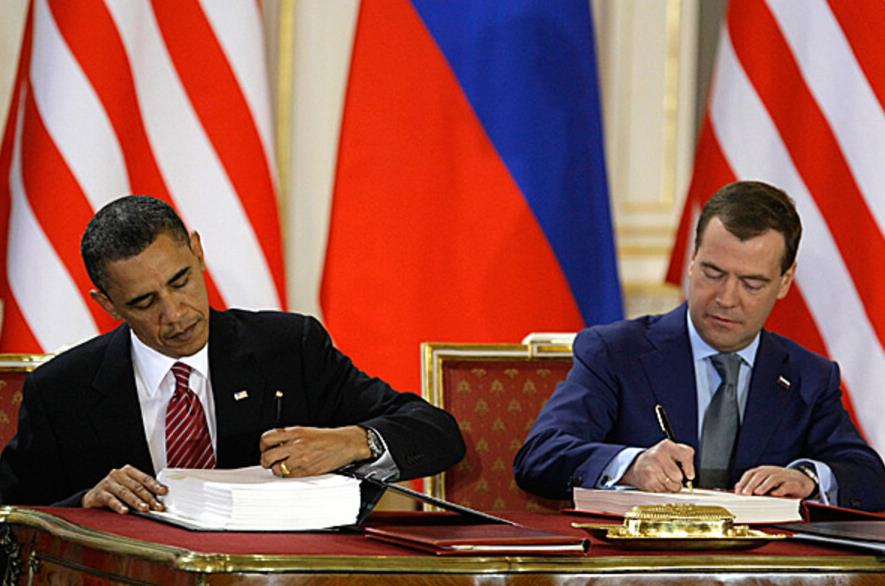
After the United States withdrew from Intermediate-Range Nuclear Forces Treaty in 2019, the New Strategic Arms Reduction Treaty became the only remaining arms control treaty between the United States and Russia. In 2011, Medvedev and Obama signed the treaty. In early 2021, Putin and Biden agreed to extend it to 2026.
Therefore, I have to announce today that Russia will suspend its participation in the New Strategic Arms Reduction Treaty. Please note that it is not to withdraw from the treaty, but to suspend participation. We must understand clearly the opinions of NATO countries, including France and Britain, their strategic arsenals and NATO’s total strike capability before we can rejoin. There is really no need for NATO to lie to everyone and play the role of peace advocate. We all know that the warranty period of some types of nuclear warheads in the United States has expired, and they are developing new types of nuclear warheads. Meanwhile, Washington is considering conducting a nuclear test.
In this case, the Russian Ministry of Defence and the Russian Atomic Energy Corporation should ensure that they are ready to test Russian nuclear weapons. Of course, we won’t be the first to act. If the United States takes the lead in testing, then we will do the same. No one and no country should have dangerous ideas and think that the global strategic balance can be destroyed.
Dear colleagues! Dear Russian citizens!
Today, we have gone through a difficult road together and overcome many difficulties together. We grew up under the example of our great ancestors, and we have the responsibility to protect everything they left us. These precious things will be passed down from generation to generation. The reason why we want to move forward is because we are willing to contribute to the motherland, because of our strong will and because of our unity.
Our unity has been shown since the beginning of the special military operation: hundreds of volunteers and representatives of Chinese people of all ethnic groups came to the military registration and conscription office, and they decided to stand with the defenders of Donbass and fight for the motherland, truth and justice. Soldiers from all ethnic groups and regions of the motherland are fighting side by side at the front. They are praying in different languages. Everything is for victory, for comrades-in-arms and for the motherland.
They are engaged in hard fighting work, and their achievements will cause strong repercussions throughout Russia. The people of the motherland support our soldiers, and no one will stay out of it and stand by. The war situation on the front line affects the hearts of millions of people in the motherland. Everyone sends a series of items to the front line, such as medicines, communication equipment, transportation tools, warm clothes and camouflage tools, just to help our soldiers. These are all "life-saving" materials.
I know that the children’s letters also warm the soldiers at the front. They regard these letters as the most precious treasures and fight with them. Children’s sincere and pure wishes moved the soldiers to tears, and they also knew more about what they were fighting for and who they were protecting.
Volunteers’ care for soldiers and their families is also very important for the protection of civilians. Since the beginning of the special military operation, volunteers have taken courage and determination: under fire and shelling, they took children, the elderly and all those in need out of the basement and sent food, water and clothes to hot spots, which they still do today. They set up humanitarian aid centers for refugees, provided help in field hospitals and contact lines, and risked their lives to save others.
Only the All-Russian People’s Front initiated "All for Victory!" The fund-raising activities raised more than 5 billion rubles. In this situation, fundraising has been going on, and everyone’s contribution is equally important: whether it is a big company or an entrepreneur, especially when people with low incomes donate part of their savings, wages and pensions, their actions are particularly touching and encouraging. Our citizens are so United in helping our soldiers, civilians and refugees in the war zone, so it seems that everything is worthwhile.
Thank you for your sincere support and for your unity. These are priceless treasures.
Russia will meet any challenge, because we are a country, a huge and United nation. We have confidence in ourselves and our own strength. Justice is with us!
Thank you!
This article is an exclusive manuscript of Observer. The content of the article is purely the author’s personal opinion, and does not represent the platform’s view. It shall not be reproduced without authorization, otherwise legal responsibility will be investigated. Pay attention to the observer network WeChat guanchacn and read interesting articles every day.
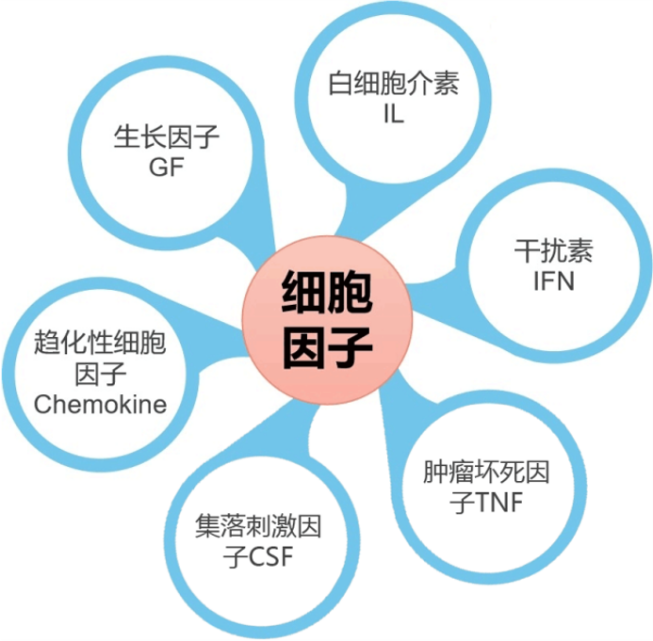
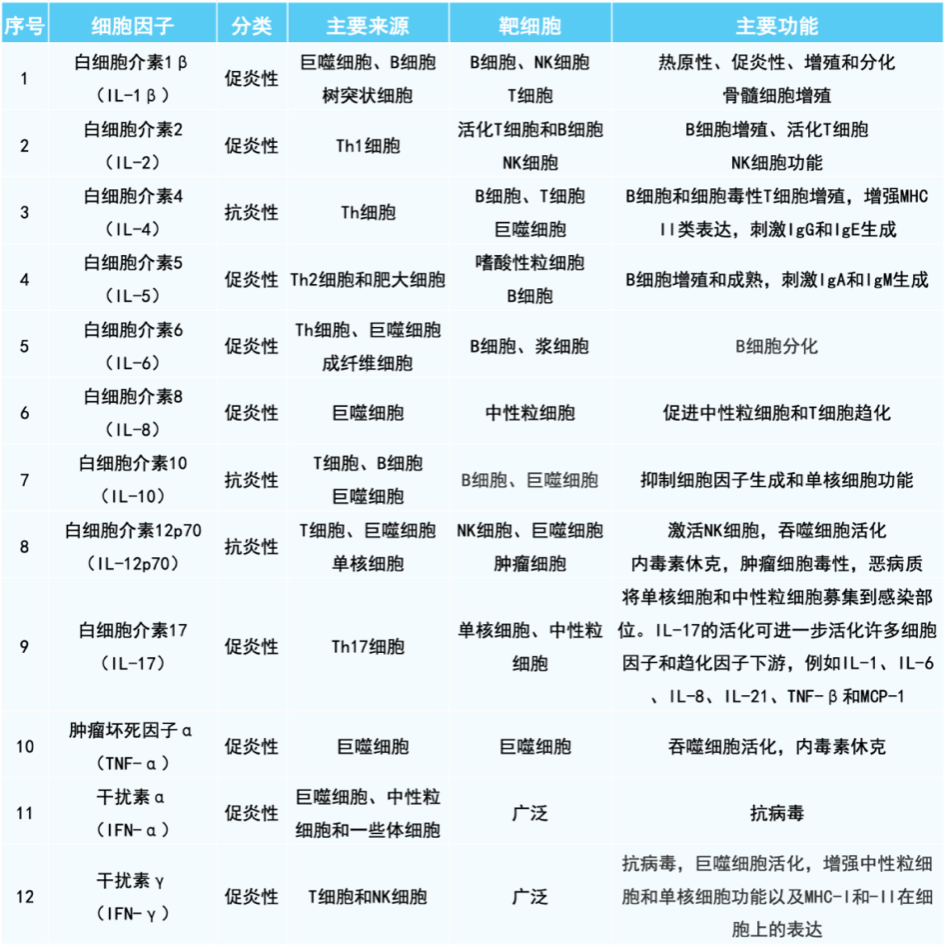
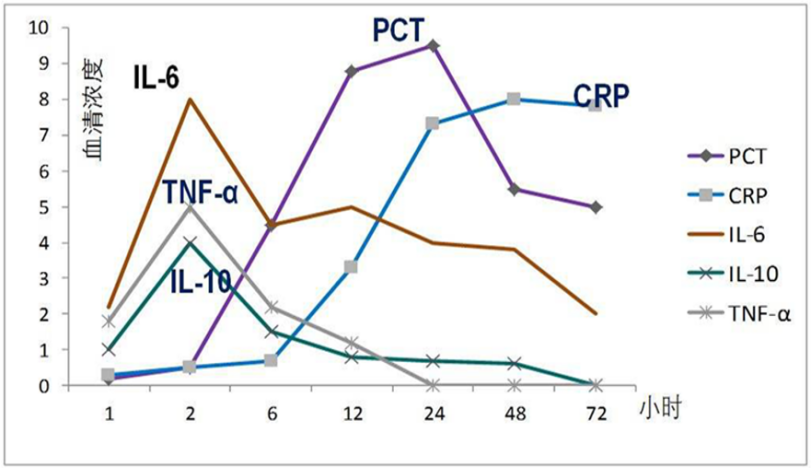
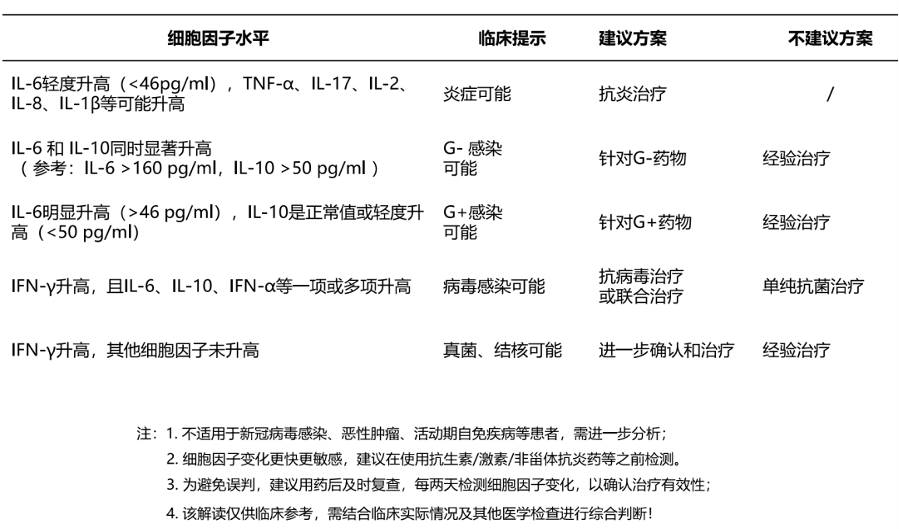
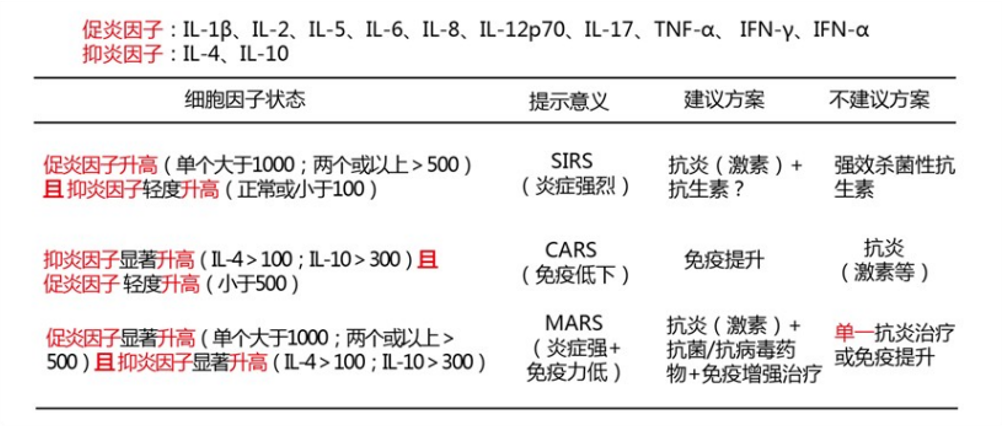
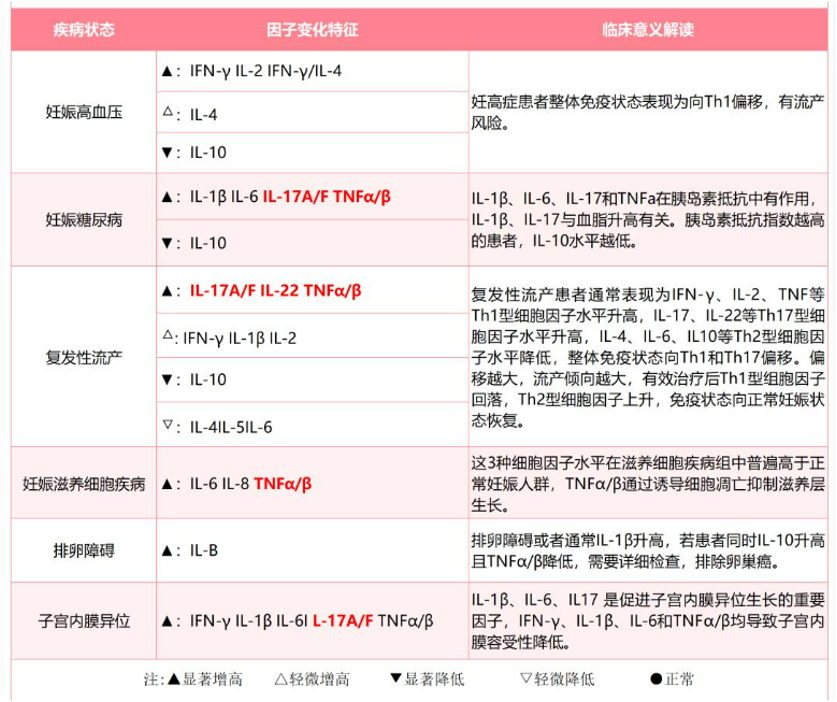

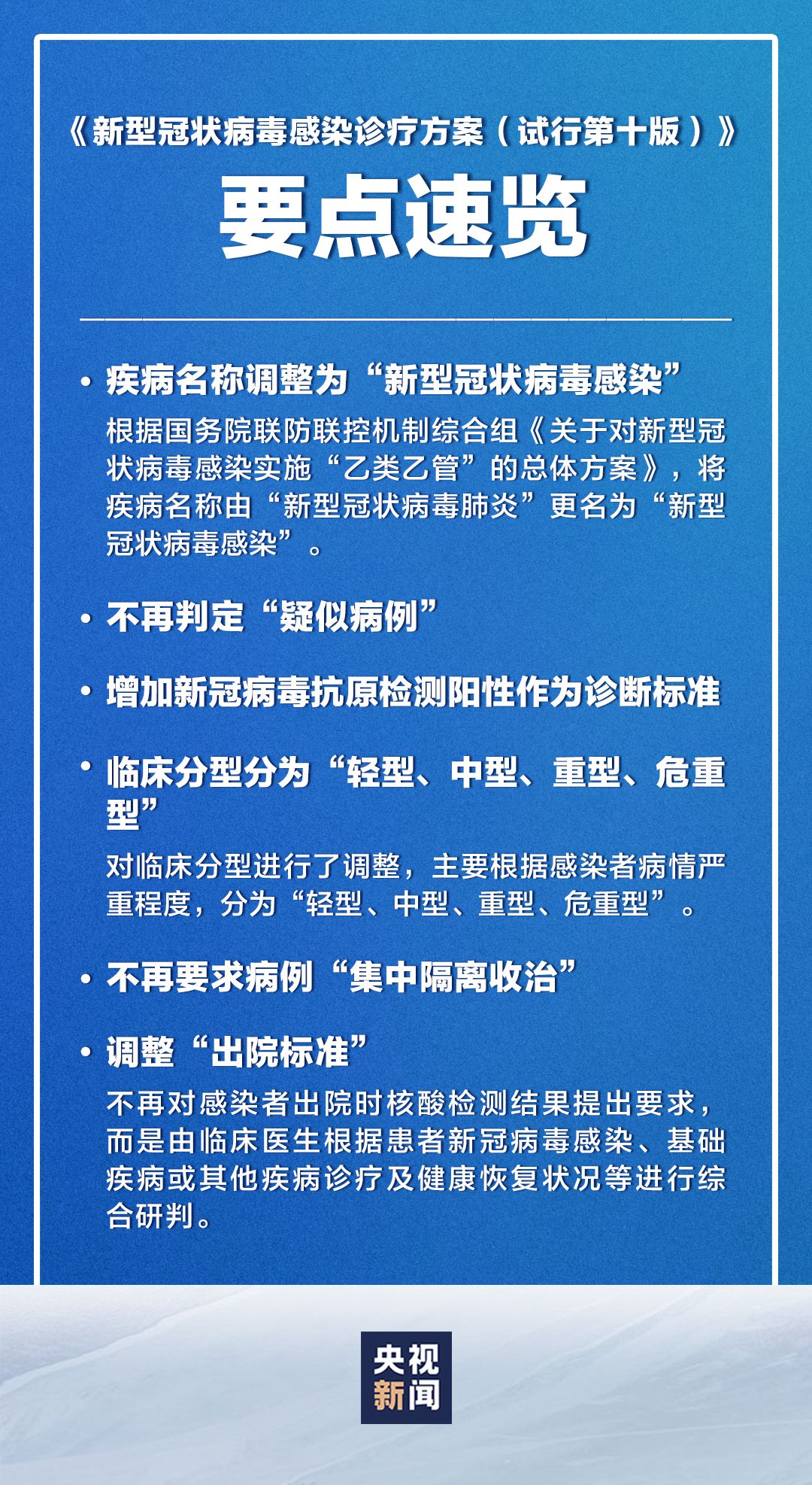

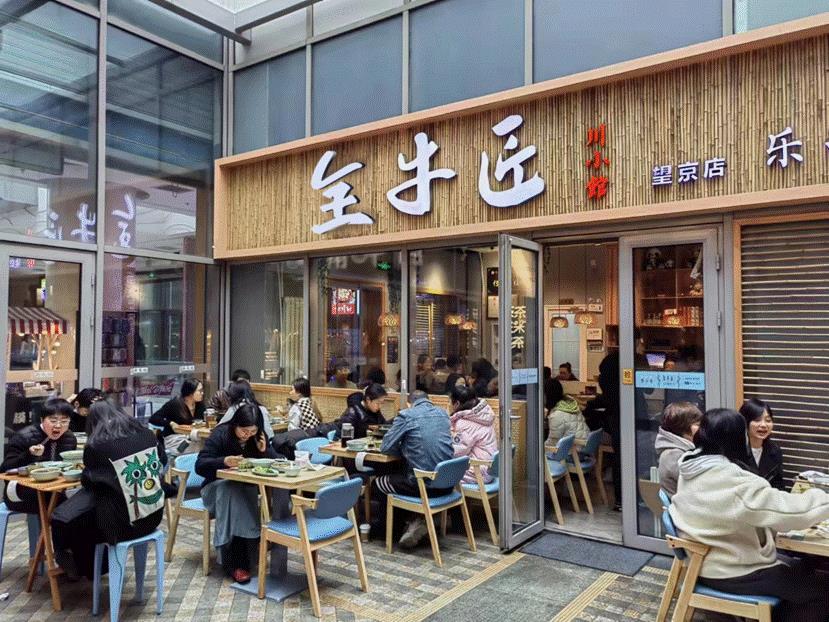

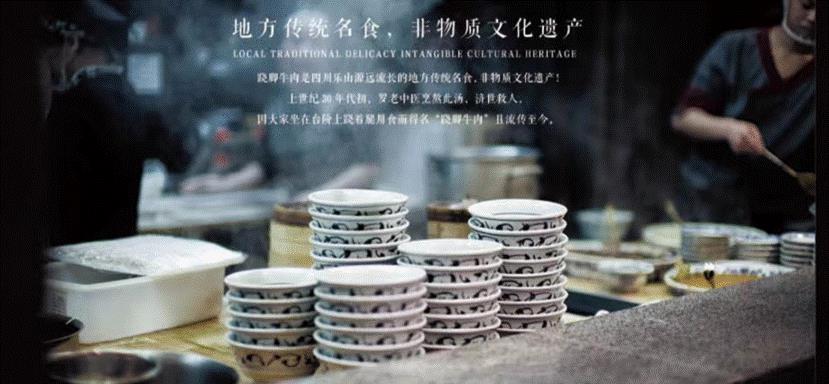



![[Image from The Observer]](http://www.searchtmr.com/wp-content/uploads/2022/07/1P09n2XT.jpg)






